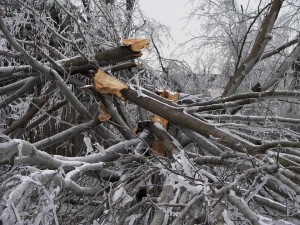
The best way to fight a fire that is within a business or home is automatic sprinkler systems. Having a sprinkler system within the home or business can even, in some cases, qualify the insured for a discount on their When installed and maintained properly automatic sprinkler systems are about 95% effective.
However, people are still skeptical of sprinkler systems and their effectiveness. Below are some facts about Automatic Sprinkler Systems:
- Each Sprinkler is activated individually by the heat of fire. Sprinklers in the system are individual and do not react as a whole but respond individually based on the room temperature.
- Without automatic sprinkler systems in place a fire can spread quickly through an entire building causing significant amounts of damage. However, if a sprinkler system is present, then that same fire would be controlled to one room and would minimize the amount of damage to the building.
- Sprinkler systems require very little maintenance. The insured should make sure that the system is inspected annually. Sprinkler systems can have a lifespan of up to 20 years if properly maintained.
- Sprinkler systems also reduce injury to anyone within the building at the time of the fire. Sprinkler systems are proven to reduce the amount of smoke which reduces the risk of smoke inhalation.
Types of Sprinkler systems:
There are several types of sprinkler systems that can be installed within a building.
- Wet Pipe Sprinklers – This is the most common type of sprinkler system and are easy to install and maintain. Wet pipe systems contain water within the pipes. Wet pipe systems are a great option for places that need a simple sprinkler system for fire protection.
- Dry Pipe Systems – Dry pipe sprinkler systems are very similar to wet pipe systems, however with this system the water is triggered by a valve that is activated by pressurized air or nitrogen. Dry pipe systems work well in environments that are at risk of freezing.
- Pre-action Sprinkler System – Pre-action systems are very similar to wet pipe systems, but the water is held back by a valve that is triggered electronically. When a fire is detected the valve is opened and each sprinkler head is activated individually. This system is great for buildings where accidental discharge from the sprinklers would cause large amounts of damage.
- Deluge Systems – Deluge systems are installed in buildings of high hazard. IN this system the sprinkler heads are kept open and the water is kept back by a valve. When a fire is detected water come out of the open heads to the flood the affected area.
- ESFR – Early Suppression Fast Response Systems are most effective for warehouse and can be used in place of in-rack systems. ESFR systems are located within ceilings and are high volume and high velocity systems that can effectively protect storage areas.
- In-rack Sprinklers – These sprinkler systems are also used in warehouses but for smaller areas. In-rack systems are located in close proximity to storage areas and effectively prevent fires from spreading throughout the warehouse.
If you have any damage from faulty sprinkler systems or fire give us a call and we’ll help you through the insurance claim process.
About AAA Public Adjusters
AAA Public Adjusters, LLC, is a property loss consulting firm headquartered in Philadelphia, PA. Additional offices are located throughout Pennsylvania, New Jersey, Florida, Maryland, Delaware, Virginia, and North Carolina. AAA Public Adjusters have been fighting insurance companies for over 25 years. AAA Public Adjusters, Maximizing Your Claim!




